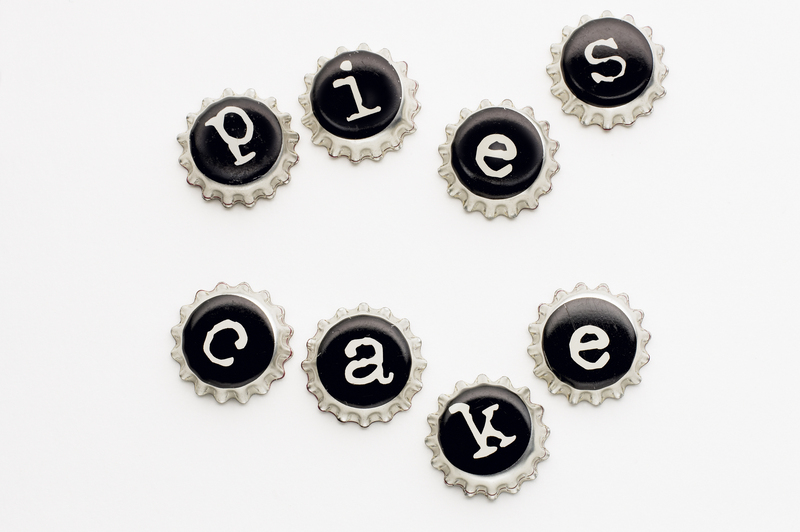Clearing Out the Kitchen: The Right Way to Dispose Pots and Pans
We all accumulate cookware over time, and at some point, old frying pans and well-loved saucepots need to go. But before tossing them curbside, have you ever wondered if there's a right way to dispose of pots and pans? Whether they're warped, scratched, or just no longer serving you, it's important to clear out your kitchen responsibly and sustainably. This comprehensive guide covers everything you need to know about how to get rid of cookware the eco-friendly way.
Why Careful Cookware Disposal Matters
Pots and pans are often made from metals such as stainless steel, aluminum, and copper--with some containing non-stick coatings. When improperly discarded, these materials can end up in landfills, contributing to environmental issues such as pollution and resource wastage. More so, certain coatings or components could be hazardous if not handled correctly. Responsible kitchenware disposal helps:
- Reduce landfill waste: Metals and plastics don't break down easily in landfills.
- Conserve valuable resources: Recycling cookware enables materials to be reused in new products.
- Protect the environment: Proper disposal minimizes harmful chemical leaching from coatings.
Clearing out your kitchen utensils and cookware should never harm the planet. Let's dive into the best practices for disposing of pots, pans, and other kitchen essentials.

Understanding What You Can and Cannot Recycle
The first step in proper cookware disposal is understanding what can and cannot be recycled. This varies by material and the rules of your local recycling facility.
Metal Pots and Pans
-
Stainless Steel, Aluminum, Cast Iron, and Copper:
These metal pans are generally recyclable because they're made from valuable resources. However, if they contain plastic handles, glass lids, or non-metal parts, these may need to be removed before recycling. -
Coated (Non-Stick/Teflon) Cookware:
Most recycling programs do not accept non-stick cookware because of the coatings, which complicate the recycling process. These might need to be disposed of differently.
Mixed Material and Specialty Cookware
-
Cookware with Wooden, Rubber, or Plastic Handles:
These need to be separated if possible. Metal goes to metal recycling; other parts in landfill or appropriate recycling bins. -
Glass and Ceramic Bakeware:
Glass and ceramic aren't typically recyclable at curbside due to their high melting points, but some specialized facilities may accept them.
How to Prepare Pots and Pans for Disposal
Before taking the next step, prepare your old pots and pans properly:
- Clean Thoroughly: Remove any food residues, oil, or grease.
- Disassemble as much as possible: Remove plastic, wooden, or rubber parts.
- Check Local Regulations: Contact your local recycling facility or waste management company to ensure you follow regional guidelines.
Pro Tip:
If your cookware has sentimental value or looks unique, consider upcycling rather than disposing. We'll explore creative options below.
The Best Ways to Dispose of Old Cookware
1. Recycling: Giving Metals a Second Life
Recycling frying pans and pots is one of the most sustainable disposal methods. Many scrap metal facilities welcome stainless steel, aluminum, or iron cookware--even those with some wear and tear.
- Remove non-metal parts, including plastic handles and glass lids.
- Check for any labels instructing recycling restrictions.
- Visit a local scrap metal recycler or municipal recycling drop-off center.
- For non-stick cookware, check with facilities first. Some accept only the metal base if it's stripped of its coating.
Tip: Many recycling centers pay for scrap metal by weight, so you might even make a few dollars!
2. Donating Usable Cookware
If your old pots and pans are still in good working condition, consider donating them:
- Charitable Organizations: Thrift stores like Goodwill and Salvation Army often accept gently used cookware.
- Food Banks and Shelters: Some accept cookware to help those in need establish or improve their kitchens.
- Online Platforms: Share on community groups, Facebook Marketplace, or Freecycle for easy local donations.
*Remember: Only donate items in safe, usable condition--no peeling coatings or warped pans.*
3. Upcycling: Creative Ways to Reuse Old Pots and Pans
Don't toss that scratched-up skillet just yet! There are inventive ways to repurpose old kitchenware:
- Garden Planters: Drill drainage holes in the bottom and use as quirky plant containers.
- Wall Art: Paint or decorate old pans for kitchen display.
- Organizer Trays: Large pans make excellent desk or workshop organizers.
- Bird Feeders: Hang a shallow pan outdoors to feed garden birds.
4. Manufacturer Take-Back Programs
Some cookware brands offer take-back or recycling programs for their old products. Check with manufacturers such as:
- Calphalon: Mail-in take-back program for nonstick cookware.
- Le Creuset: Occasional in-store recycling events.
- Other Brands: Some retailers accept old cookware for responsible recycling when you buy new.
Tip: Contact the manufacturer's customer service or visit their website for program details.
5. Safe Landfill Disposal
As a last resort: If your pots and pans are unsafe, heavily contaminated, or considered hazardous waste (like Teflon with deep scratches), you may need to dispose of them in the landfill. Always check local rules first.
What Not to Do When Disposing of Pots and Pans
- Don't place non-stick pans in curbside recycling: Most curbside programs cannot process non-stick coatings.
- Don't donate unusable cookware: If it's damaged, peeling, or warped, it's not suitable for donation.
- Don't burn non-stick pans: Toxic fumes are harmful to health and the environment.
Frequently Asked Questions about Disposing Pots and Pans
Can you put pots and pans in the recycling bin?
Usually not. Most municipal recycling programs can't process cookware. Take them to a scrap metal recycler or a special drop-off facility instead.
Are non-stick pans hazardous waste?
Old Teflon and non-stick coatings can become hazardous if excessively worn or damaged (especially pre-2013 with PFOA). Always check with your local disposal authority.
Will thrift stores accept my old cookware?
Only if it's in good, clean, and safe condition. Check with your local store first.
How do I find a scrap metal recycling center?
Search online for "scrap metal recycling near me" or check your city's municipal website for special disposal days.

Final Kitchen Cleanup: The Sustainable Approach
Clearing out the kitchen is about more than making space--it's your chance to reduce waste, help your community, and protect the environment. By following the steps above, you give your old pots and pans a new lease on life and ensure that your kitchen refresh is eco-friendly.
Next time you buy new cookware or reorganize your home, think carefully about every item you toss. Together, small changes in how we dispose of unwanted kitchenware make a big difference for our planet.
Summary: Top Tips for Disposing Pots and Pans the Right Way
- Recycle when possible: Use scrap metal facilities for metal pots and pans.
- Donate undamaged cookware: Help others while reducing waste.
- Get creative: Upcycle old cookware into planters or decor.
- Use manufacturer programs: Participate in take-back schemes where available.
- Check local rules: Always follow your area's disposal guidelines for safe, responsible kitchen cleanup.
Remember: Disposing pots and pans the right way is as important as the meals you once made in them. Make every clearance count--for yourself, your community, and your planet!
